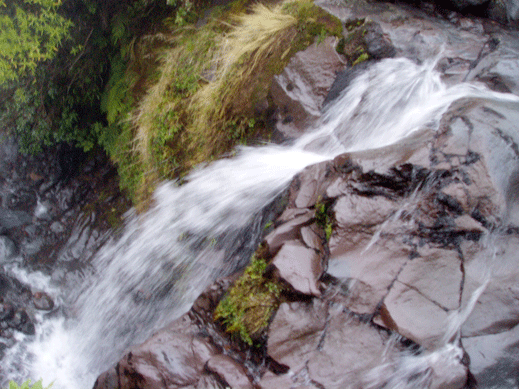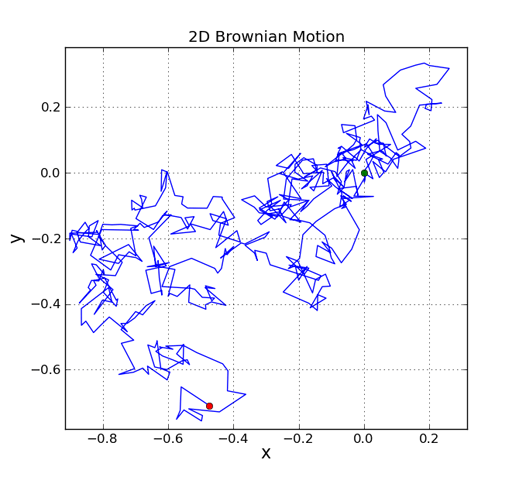Water Falling, Brownian Motion and Wai: Two Rocks and a Meander

A waterfall in the Taranaki region, photo by C5 taken as part of a mapping exercise at the first SCANZ
Today I went for a walk with Te Urutahi Waikerepuru, to talk about stuff and at the same time look over the potential sites along the Huatoki river walkway. The walkway passes right through the middle of New Plymouth Nga Motu. It was the third time I’d done this walk – first to get pictures for this site, second with Allan Giddy of UNSW in Sydney who was scouting locations and now with Te Urutahi.
Anyway we were both taken with what was presented to us in terms of following the meander of the stream as opposed to the grid of the streets. This is entirely one of the points of SCANZ: to go to locations where boundaries meet. The boundaries of culture, of discipline and of place.
In the city, what we get is the perspective layout of streets. Tar seal among buildings. The built environment in rows. Lines to ensure we get there in the fastest way between two points: straight.
Compare this to Brownian motion [1], drawn above by Kay Kirkpatrick [2] for students studying probability theory. The blue line is a meander, quite unlike the grid that measures it. We perhaps live in a time where the prominence of the grid should be usurped by eminence of the meander. Not that one or the other is the issue, both are necessary today, but that one or the other has prominence due to the focus placed on it.
The grid and the meander give entirely different readings of place. When the Huatoki is the guide for traversing the town, we encounter the sea where the stream terminates, the grassed public space in front of Puke Ariki museum, then step across the street to the Huatoki plaza, with landscaped landings and muraled buildings. The river stream passes under a block and a half of building and emerges in a park. A transformation has occurred and the town scape vanishes from view. Nature dominates.
Nature continues to dominate until we reach points where humans attempted to dominate nature: two sites where marker rocks in use in pre-European times were dynamited by colonisers. These rocks were big and dynamited to clear the way. Of course, no such thing results, and when we visited today the rock fragments had caught large chunks of debris.
The meandering river then, wanders through from vistas of the sea to contemporary public landscape architecture, hybrid bush environments, rustic pathways, geological references with cultural usage in pre-European and now contemporary times. That is why the river site was chosen as the place for art works.
At the end of our meander, Te Urutahi and I stood on a small bridge gazing down on the river. Little waves of river energy were gathering around resistant rocks, forming continuously variable pathways of flow, dancing here, dancing there. We talked about placing projectors above and below, about a friend of hers capturing eight kinds of river audio. Framed by large native tree ferns and the branches of introduced trees we watched the bubbles formed by the Huatoki’s flow. Much like Brownian motion with constraints. She took dibs on this spot.
We have been there before, many times in many guises – from the C5 experience of Taranaki at SCANZ 2006, to Dr Te Huirangi Waikerepuru talking about Wai at SCANZ:Eco sapiens, the connection of water in many of the works shown as part of Uncontainable Second Nature Te Kore Rongo Hungaora in Istanbul, Wai at ISEA 2012 Albuquerque and in 3rd nature at SCANZ 2013. Being located in public space on the site of wai – water – will make quite a difference in 2015.
Notes
1. Brownian motion captures the free action of molecules bumping around in an apparently random way. Historically it was important to the confirmation of the existence of atoms, and interest was revived with Chaos Theory involving studying randomness. It should be said that turbulent flow and Brownian motion are quite different things, I only mean here the dancing random action of the variable bubble paths of the stream recalled random processes. The contrast to the grid is also a subject of this article.
2. Kay Kirkpatrick image source: http://www.math.uiuc.edu/~kkirkpat/562.html



















